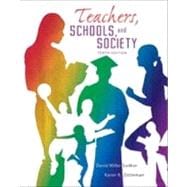
Note: Supplemental materials are not guaranteed with Rental or Used book purchases.
Purchase Benefits
Looking to rent a book? Rent Teachers Schools and Society Loose Leaf [ISBN: 9780078024450] for the semester, quarter, and short term or search our site for other textbooks by Sadker, David M.; Zittleman, Karen; Sadker, Myra P.. Renting a textbook can save you up to 90% from the cost of buying.